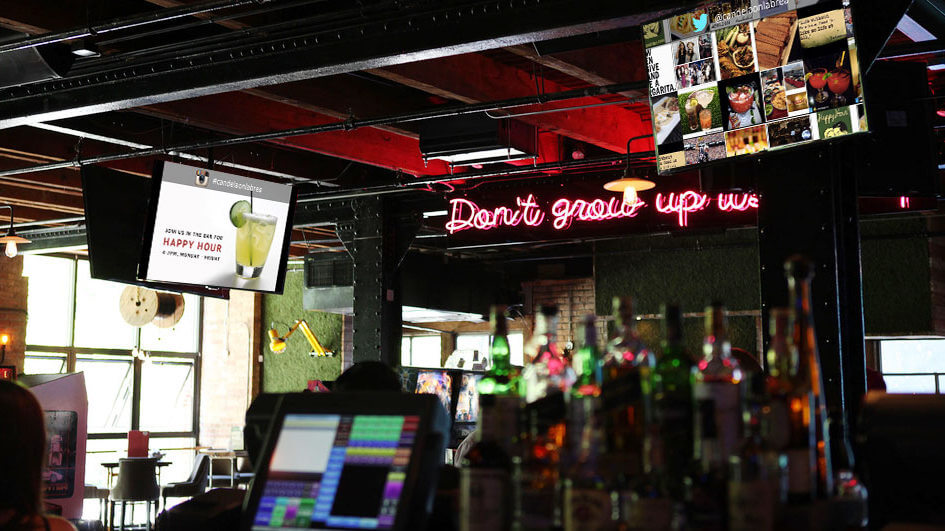
“Offline marketing” refers to any strategies you use to attract customers or boost sales that don’t involve your website or social media. Even in today’s online age, offline marketing can still produce powerful results – especially when paired with your digital strategy. This article presents 11 modern offline marketing strategies that can drive real results for your business.
1. Wear your logo or hashtag
“In the fashion industry, shops are employing influencers to promote their products. Seeing others wearing something is much more powerful than a hard sell.” – AJ Agrawal, Founder of Alumnify and Forbes contributor
Take advantage of the opportunity to make a fashion statement while promoting your brand by having your employees wear shirts or other gear with your logo, motto, or hashtag on them. Good design and high-quality materials are key to standing out in a good way.
Let your employees choose from different cuts, styles, and colors so they can express their personality. You can print up extra shirts for sale or for freebie giveaways during special events or promotions. By incorporating your hashtag in the design, you’ll increase its visibility and likelihood of being used more widely.
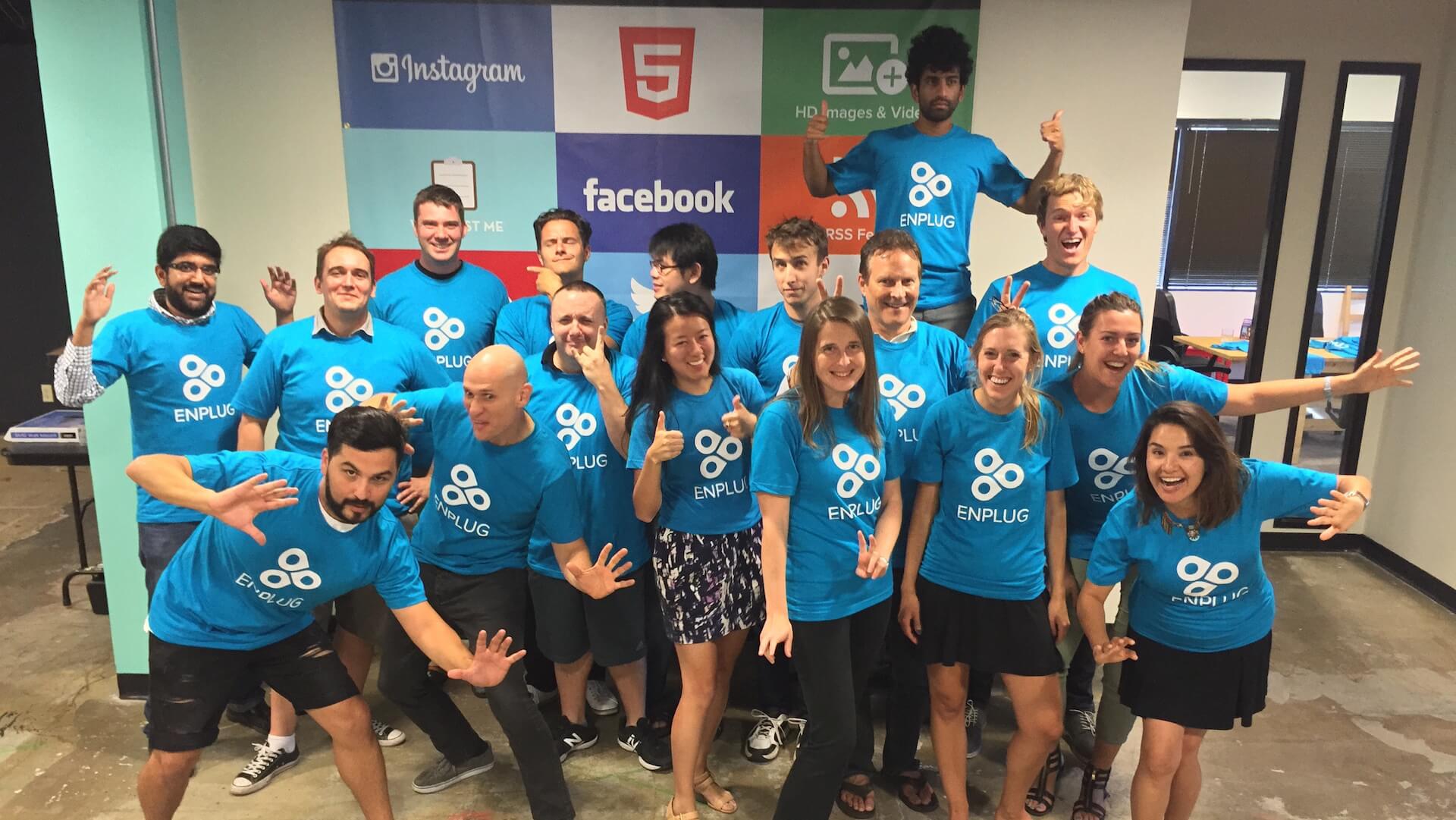
How it fits in with your digital strategy: By having your team literally wear your brand, you’ll further increase your social media’s cohesive image when you post photos of your staff at work or customers at events wearing your swag. Plus, more offline spaces will be promoting your brand name and hashtag.
Cost: $10-15 per shirt, depending on quantity and quality of shirts.
2. Donate your space to local meetups or groups
Act as a sponsor for a Meetup or community group by donating your space for their use during events, discussions, or meetings. A lot of hobby or special interest groups have a hard time finding space that accommodates their budget and their group size.
Reach out to groups whose interests or goals align with yours, and you’ll likely earn the loyalty of a few new customers, plus you’ll get good word-of-mouth referrals and some social media posts (especially if you ask them for it in return). It’s a perfect opportunity to show off how your business supports its community online, too.
How it fits in with your digital strategy: You’ll get a lot of social media mileage out of this, especially if it’s an ongoing event. Share on your social media and newsletter and get people to share it on their channels, too.
Cost: Minimal to free.
3. Or host an event of your own
78% of millennials prefer a brand experience that is relevant and gives them information. – Social Media Week
You may not have considered events to be offline marketing, but they are a great way to get people in the door. Throw a party or have a special promotion when you launch a new product, release a new flavor, or partner with a new local merchant. You can also hold seminars or info sessions and seasonal events. Events don’t require a large space or budget to be a success, either.
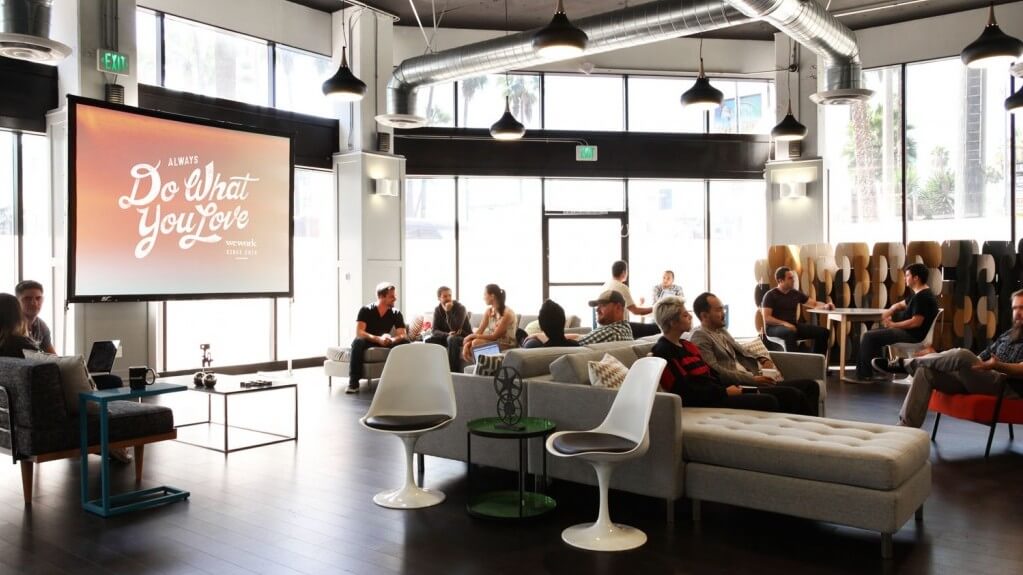
You can get even more creative by hosting a pop-up exhibit, slam poetry reading, urban gardening demo, or community yoga class depending, of course, on your product and target customer. For these events, reach out to community members and local experts who might be interested in organizing the event with you. They’ll likely have a network of people they know who will be interested.
How it fits in with your digital strategy: Livestream events that are entertaining or informative and encourage people to post from the event. These are worthy of placing digital ads, too.
Cost: $500 and up per event.
4. Rent a booth at a local festival or trade show
Participate in community events and establish yourself as an authority in your industry by renting tables or booths. Trade shows continue to remain relevant for offline marketing because they allow you to reach many people who haven’t heard of your business before. You’ll have the opportunity to engage with potential new customers and partners in the process. (After all, everyone at the event is there because they are actively seeking out new information or experiences!)
Make the most of the space you have by wearing your company swag (see #1), offering free samples or discounts (see #8), and displaying more information about your business on your digital signage (see #11).
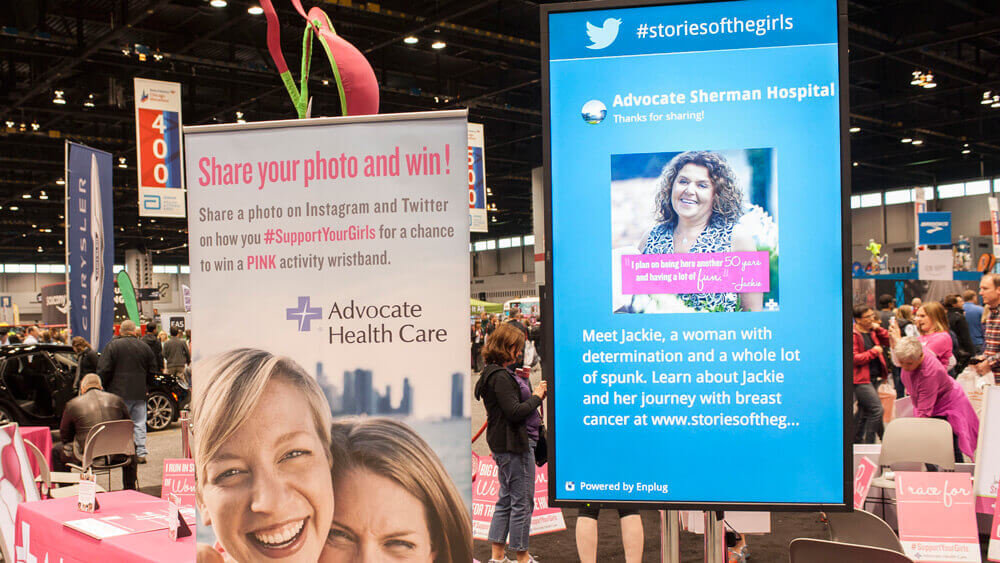
How it fits in with your digital strategy: Share the news about the event and your participation on your social media and in your newsletter. Encourage people to come! You’ll likely get good exposure from the event’s social media team as a bonus.
Cost: Varies depending on type and size of the event, but like starting a couple hundred dollars for small, local events and up to a few thousand dollars for large trade shows.
5. Make your space and your product social media-worthy
Millennials are happy to give you free advertising in the form of an Instagram or Twitter post if your space or your product is photo-worthy. Few can resist the urge to snap a photo of high-quality packaging and presentation, impeccably designed displays, and large, funky backdrops. Just look to Alfred Coffee in Los Angeles as an example: Their slogan “But First, Coffee” started popping up all over social media because of their giant neon signs against a bold, graphic backdrop—which make for the perfect artsy photo.
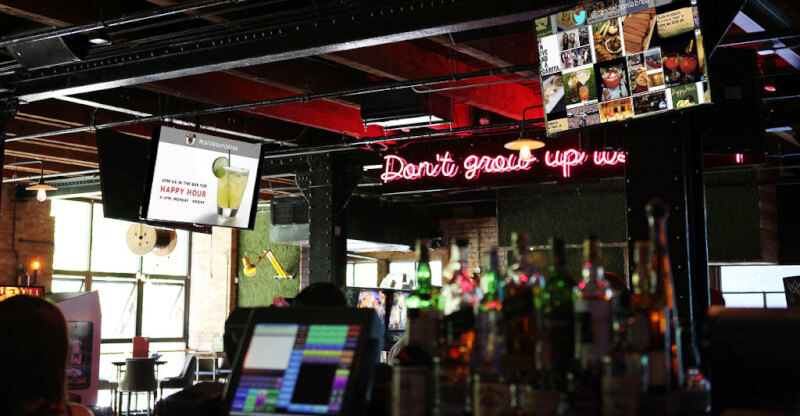
How it fits in with your digital strategy: Great design begs to be shared on social. And if your customer loves your business and your design, they’ll share it.
Cost: Free to a few thousand dollars depending on your ambitions and artistic talents.
6. Gamify the in-store experience
“Not only can gamification drive one-time and repeat actions, it can also offer insights into customer preferences that can help retail marketers target customers better via mobile and other channels.” – Retail Dive
Offer points, store credit, and other incentives to customers while they’re in store. For example, if they order a certain menu item, they get a reward. If they try out a demo, they get a reward. If they snap an Instagram photo using your hashtag in front of a display, they get a reward. The point is to keep customers in your venue longer and to try out different things. In return for their attention and playing along, give them real value. Rewards could include discounts, free add-ons like ice cream toppings, or entries into a sweepstakes.
How it fits in with your digital strategy: Gamifying your customers’ in-store experience incorporates the use of social media, but it can also be done using your business’s app, if you have one. You can also use in-store digital displays to give customers clues and alert them to the gaming experience while they’re shopping.
Cost: None except the discounts you offer to customers.
7. Partner with neighboring businesses
Take advantage of your proximity to other businesses by partnering up with them for a one-night-only or weekend-long event. Create a tour, scavenger hunt, or freebie day that’s all about customer appreciation and requires participants to visit each store’s location for a specific prize everyone contributes to. You’ll attract lots of new customers and build relationships with your neighboring businesses while you’re at it.
Likewise, you can partner with companies that share your values and help customers achieve the same goal (like good health or a certain lifestyle) but with a different product or service that serves that goal.
How it fits in with your digital strategy: Along with other businesses, pitch in on a Facebook event and hashtag to increase visibility. You can buy your own ad to further promote it, and of course use social media or digital signage (see #11) to increase awareness.
Cost: $100-500 in swag or prize contributions.
8. Establish a referral or loyalty program
“[Millennials] may be harder to sway to your cause, but when they do become loyal they tend to be the most loyal consumers around.”
–AJ Agrawal, Founder of Alumnify and Forbes contributor
Print out referral coupons and loyalty cards and offer a free gift or discount for customers who refer other people to you (and those who take advantage of that referral). Returning customers should be rewarded, too, so offer them a small token of appreciation on their tenth visit, or every time they spend $100. A little love back to the customer goes a long way in keeping them loyal to your brand.

How it fits in with your digital strategy: A print coupon or loyalty card complements your digital coupons or online referral program campaign. If you already have in-store digital displays, create graphics promoting these rewards and show them on your screens. You can also share your reward programs on Twitter and Instagram, or even build them into your customer-facing mobile app if you have one.
Cost: Starting at $100 for print materials, depending on quantity.
9. On that note, use high-quality print materials
How do you know your business cards aren’t just ending up in the trash? Invest the time to create a great design and the money to print beautiful cards that people want to hang onto. It should be obvious, but too many businesses treat print materials like an afterthought. Letterpress-quality business cards, coupons, and postcards will set you apart, and people will hold onto them if they look good.
Not a designer? No problem. Sites like 99Designs make it simple to crowdsource your designs and get bids from designers all over the world.
How it fits in with your digital strategy: All the time you spent designing your logo, website, and newsletter pays off and takes on a new form. It complements your digital assets.
Cost: $500 to $1,000 for initial supply of print materials, depending on quantity
10. Find local or niche influencers to tout your brand
Many of these strategies are designed to help you generate organic word-of-mouth marketing through your customers, but another way to ensure you’re reaching as many people in your target audience as possible is working with a reputable influencer or network of influencers who have both clout and reach in your industry. Having a trusted expert sing your praises to their followers can be a lot more effective than reaching those people on your own and getting them to take your word for it.
According to HubSpot, word of mouth affects online conversation about nine times more than clicks, shares, and retweets do, and research shows that millennials trust people more than brands.
Just do your research and make sure it’s a good fit both ways. You have to be comfortable handing over some amount of creative control to a popular blogger, for example, who is writing their own content about your brand. On the other side of things, if your product or service seems like an odd match for an influencer, it might annoy their followers. It should seem like a natural fit for this person to be promoting your brand.

How it fits in with your digital strategy: Whatever content an influencer is creating about your brand is yours to share on your social networks. A strategic partnership should incentivize an influencer’s followers to interact with your brand online, opening up all kinds of new opportunities to engage with new potential customers.
Cost: A few hundred to a few thousand dollars, depending on influencer’s popularity.
11. Use digital signage to attract customers and advertise
“Enplug has brought a whole new dimension to our gelato shop. Our customers seem to stay longer, talk louder and laugh harder while posting photo after photo, which in turn creates a ‘gravity’ pulling more people into the store.” – Bobbi Barbour, E-commerce & Marketing Manager, Paciugo Gelato
Digital signage is becoming ubiquitous these days, and there are a lot of guides on where to install digital displays to make the greatest impact. Enplug’s digital signage connects with customers both online and offline with interactive content that can show off your branding, social media content, and news, as well as provide real-time information.
Use digital signage for offline marketing at your events, at trade shows, during special promotions, and more. Display a feed from your Instagram and Twitter accounts, and encourage people to post using your hashtag to see their posts appear instantly on-screen. You can also approach other businesses who use digital displays about buying an ad on their screens.
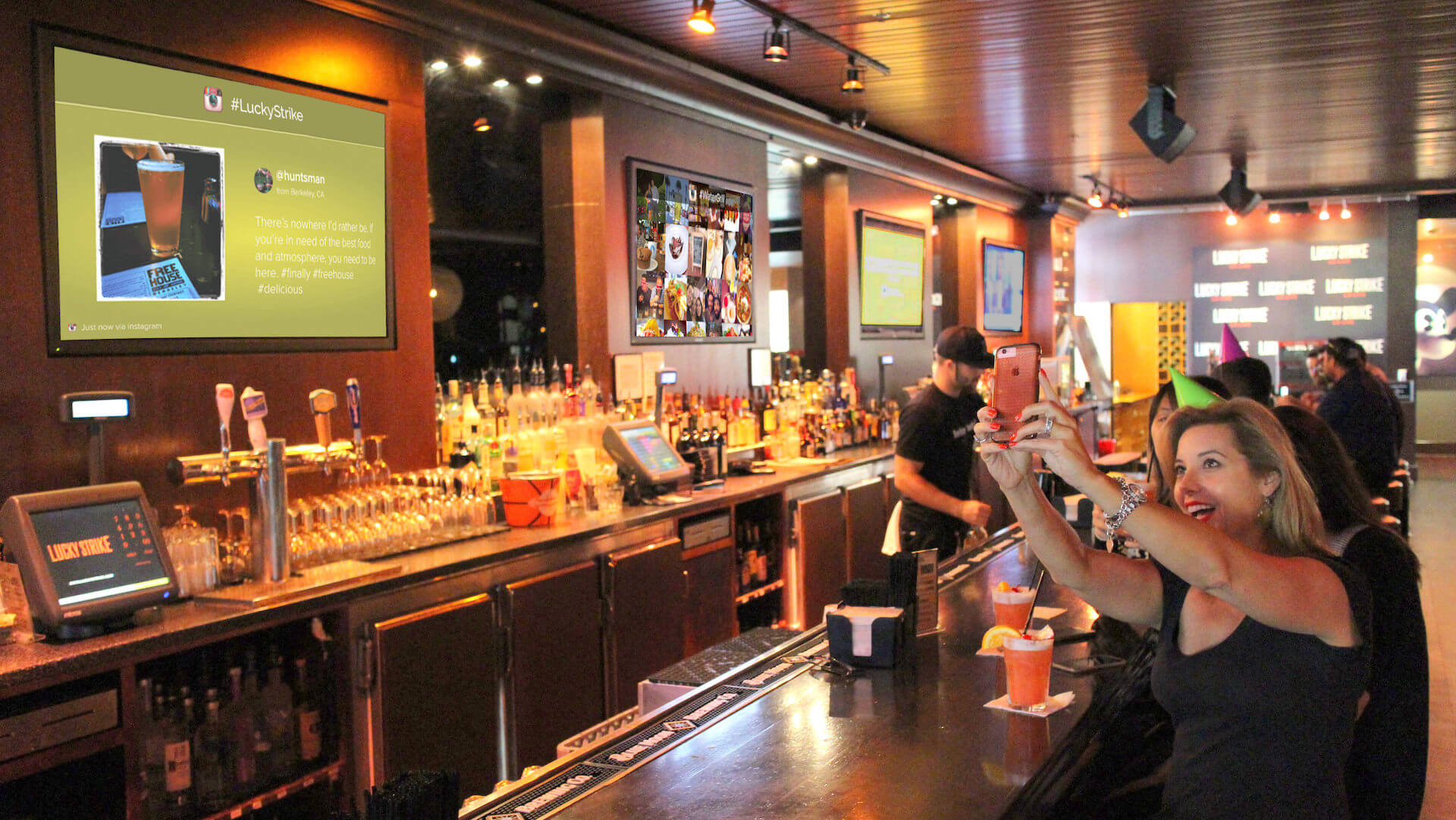
How it fits in with your digital strategy: You’re bringing your whole digital strategy right to your display in your business.
Cost: See Enplug’s pricing here.
If you’re trying to target web-savvy millennials, don’t forgo offline marketing. The key is making sure your marketing efforts are consistent across all platforms and complement one another. Combined with your existing digital marketing plan, these offline marketing tactics will help your business stand out and engage customers both in your venue and in the online world.
